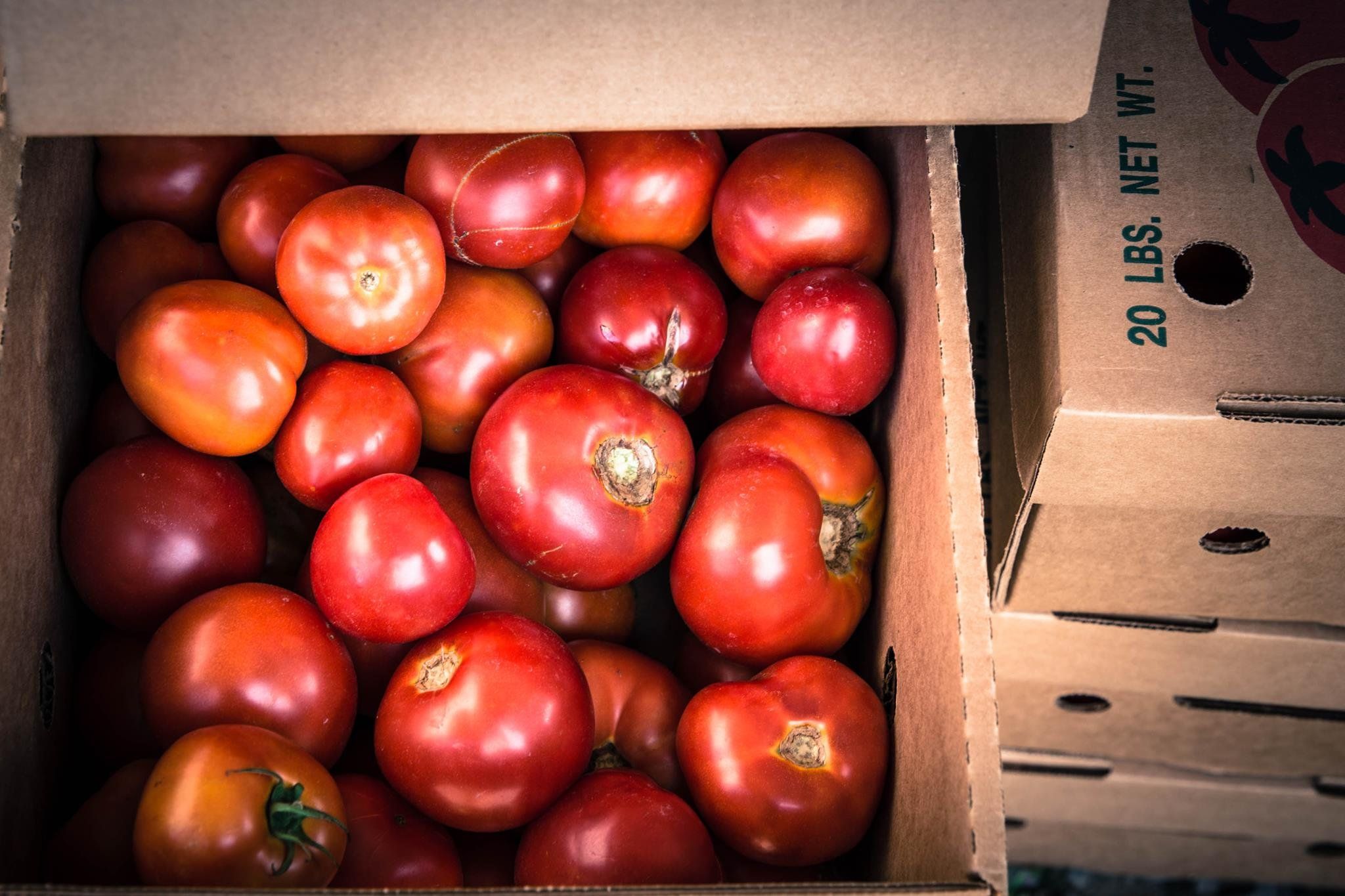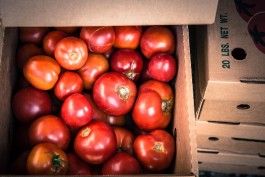It’s hard to believe that the summer is turning a corner and while we are still in desperate need of rain, we are looking forward to seeing some cooler temperatures in the coming week. We have cleaned up storm damage around the farm and are continuing to irrigate everything we can. The tomatoes are coming in strong now and we will have bulk cases available to purchase as Extras this week for folks that want to can or freeze some for the winter. (Details on how that works can be found at this link.) As the tomatoes, especially the heirlooms, can be very fragile, we strongly encourage you to look through your share when you receive it at pick up so that if anything is not the way you would like it, we can fix it on the spot. We want you to be happy with your food and look forward to helping you best in person at the farm.
We do have some of our own corn that is expected to come in soon; a later planting than the one that got damaged in the tropical storm. Organic sweet corn is hard to find in stores for several reasons, one of which is that the sweet fragrance of the ripening silk attracts the large female corn worm moths, who like to lay their eggs in the very tip of the developing ear of corn.
Don’t be fooled by their benign appearance, these moths are vicious (and voracious!)
Upon advice from the recently retired Dr. Jude Boucher from UCONN, we set up traps to monitor the presence of the moths in our field. It is fascinating to note that their presence or absence is related to weather patterns; the strong updrafts associated with summer thunderstorms will relocate them from the moister, coastal areas they tend to inhabit to areas further inland, if that is the direction the storm is travelling.

Depending on the number of moths we collect in the traps, we can decide if and how often we can use a naturally-derived, certified organic treatment to reduce the number of corn ear worms that we might find in our final crop. It is likely a few may slip past us, so if you find a worm in an ear of corn, you need only cut off the tip of that ear where the worm is, as while they are unsightly, they do no harm to the rest of the cob. These little creatures are just one of the trade-offs to having our food produced without the use of synthetic chemicals!

Upon seeding, the corn can get ravaged by crows. Before the ears even begin to form, the corn plant itself must compete with other grassy and weedy species for space and light. Conventional corn producers can use weed-specific herbicides to reduce competitive weeds, but we planted in 30” rows so that the corn can shade out the competition and reduce our need for mechanical weeding. After the corn ears reach maturity, they are then threatened by hungry herbivores.

Deer fencing is not practical on our fields (given their dimensions, locations and need to continually rotate crops in order to promote soil fertility,) and the fields are very close to the Rails-trails so hunting is not usually a great option, therefore we have to hope that we have planted enough to allow the raccoons and deer their “share” and still have enough left for us.
To store your corn at home, cut off the shank of the corn -- the knobby extension protruding from the end of the corn ear where it connects to the stalk. This is one of the best places for worms to develop, and removing the shank with a knife will extend the life of the corn. Place ears of corn in your refrigerator as soon as possible. Leave the husk on, if possible, and let the corn sit in the fridge uncovered. Keep the temperature at or below 40 degrees to reduce the amount of natural sugars in the corn from turning to starch at higher temperatures.
Sweet corn can be enjoyed raw, but boiling is the classic way to prepare it. You can either use a wide, flat pan and lay the corn on its side, or use a taller stock pot to boil a big batch at once. Either way, fill the pan with enough water to cover the corn and bring it to a boil. Shuck off the outer husk and silk from the corn. Dissolve a tablespoon of salt in the water and add the corn. If your corn is very fresh, cook it for 3-5 minutes. If you don’t cook it right away, go for 6-8 minutes. You can also try roasting your corn in the oven, or even microwaving it with the husk still on!
Eggplant may be available in your share this week or next. Eggplant comes in many different shapes and sizes, and colors range from white to lavender to dark purplish-black as well as pale green, yellow, and reddish. There may even be some striped varieties that you will receive here at Oxen Hill Farm. Eggplants tend to dry out quickly and should be used within a few days before they get soft. If that happens, they have not "gone spoiled" and can still be cooked, they just lose their firmness.

Eggplant varieties may be used interchangeably in most recipes, unless the skin color is a specific visual factor in the dish. Since eggplant is tropical in origin, it does not agree well with extreme cold. For this reason, a whole eggplant will last better and longer out of the refrigerator, but in a cool place — 50 degrees is ideal. On the counter-top, eggplant should keep for about 3-5 days. If storing cut eggplant, wrap in plastic and place in the least cool section of the refrigerator.
One pepper that likes to come in early and seems resistant to many pests is the shishito pepper. Like all peppers, it starts off green then matures and sweetens as it turns to red. Most people want to know, "is it hot?" and the answer is "usually, no." But one out of 10-20 peppers will take you by surprise with a bit of heat. It keeps things interesting, right?

Shishito peppers are a favorite snack food in Japan, where this thin-skinned mild breed of pepper was developed. Their flavor is lively and sweet with a hint of smokiness. The thin skin of the shishito allows it to blister and char quickly, which accentuates its naturally intense chile aroma and flavor. Their small size, big flavor and quick cooking time makes the shishito pepper a natural for fast & easy summertime appetizers.
However you cook them, it’s a good idea to puncture each pepper before cooking to vent rapidly expanding hot air that could cause the cooking pepper to burst. Shishito peppers can be used any way you’d use any other chile pepper, but they’re small size makes them particularly good in appetizers or as a garnish with other dishes. You’ll often see shishito peppers pan-fried in a little oil and served as an appetizer or with drinks. They’re also wonderful when skewered and grilled on the barbecue.
Here is the link to the week 9 Pinterest board: https://www.pinterest.com/oxenhillfarmcsa/week-9/




